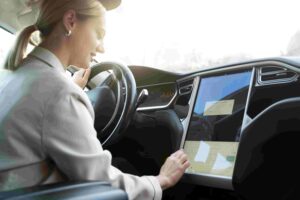Imagine a future where your daily commute involves soaring through the skies, bypassing the gridlocked streets below. The concept of flying cars has captured human imagination for decades and continues to intrigue tech enthusiasts, urban planners, and futurists alike. This blog post will explore the fascinating evolution of flying cars, assess current technological advancements, and consider the potential impact on society, economy, and environment. By the end of this comprehensive analysis, you’ll gain insights into whether flying cars are destined to become a staple in the future of transportation.
Taking Flight from Fiction to Reality
Flying cars have long been a staple of science fiction, inspiring awe and wonder about the possibilities of a sky-bound future. Early visions of flying cars were born from the pages of novels and the frames of movies, casting a fantastical image of personal aerial vehicles zipping across the skyline. However, the desire to bring this concept to life is not purely fictional; it’s deeply rooted in our quest for innovation.
The historical evolution of flying cars dates back to the early 20th century, when inventors began experimenting with hybrid vehicles combining elements of automobiles and aircraft. One of the first attempts was the Autogiro, developed in the 1930s, which featured a rotor for vertical flight and fixed wings for forward motion. Though these early models never quite took off, they laid the groundwork for future innovations.
Fast forward to today, and flying cars are no longer confined to the realm of science fiction. Advances in technology have made it possible to envision a world where personal aerial vehicles become a reality. Companies around the globe are investing in research and development to make flying cars a practical mode of transportation, setting the stage for a new era in mobility.
The Technology Behind Flying Cars
In recent years, the progress in flying car technology has been nothing short of astonishing. With advancements in materials, propulsion systems, and autonomous control, flying cars are quickly transitioning from prototypes to fully functional vehicles. Major players in the automotive and aerospace industries have recognized the potential of flying cars and are vying to be pioneers in this emerging field.
One notable development is the use of vertical takeoff and landing (VTOL) technology. VTOL capabilities allow flying cars to take off and land without a runway, making them highly adaptable to urban environments. Companies like Uber Elevate and Boeing have been investing heavily in VTOL technology, aiming to create efficient and safe flying cars suitable for city use.
Electric propulsion is another key advancement that promises to revolutionize flying car design. Electric motors offer several advantages over traditional combustion engines, including reduced emissions, lower noise levels, and increased efficiency. Electric Vertical Takeoff and Landing (eVTOL) vehicles are at the forefront of this shift, with startups like Lilium and Joby Aviation leading the charge in developing electric flying cars.
Transforming Urban Landscapes
The potential impact of flying cars on urban planning and transportation infrastructure is immense. Imagine a cityscape where rooftop helipads replace parking lots, and air traffic control systems manage fleets of flying cars navigating the skies. The integration of flying cars into urban environments would necessitate significant changes to current infrastructure and urban planning strategies.
Urban planners face the challenge of designing cities that can accommodate both ground-based and aerial transportation. This requires innovative solutions such as dedicated air corridors, vertiports for takeoff and landing, and seamless connections to other modes of transit. The shift from two-dimensional to three-dimensional transportation networks could alleviate congestion and increase overall mobility in densely populated areas.
Flying cars also have the potential to reshape suburban and rural landscapes. With the ability to cover greater distances in less time, flying cars could make remote areas more accessible and desirable for living and working. This could lead to a decentralization of urban centers, spreading economic opportunities and reducing the strain on existing infrastructure.
Economic and Environmental Considerations
The economic implications of integrating flying cars into society are vast and complex. On one hand, flying cars could drive economic growth by creating new industries and job opportunities. The development, manufacturing, and maintenance of flying cars would require a skilled workforce, and ancillary services such as air traffic management and vertiport operations could offer additional employment prospects.
However, the cost of developing and deploying flying cars remains a significant barrier to widespread adoption. The initial investment in technology, infrastructure, and regulatory compliance is substantial, and it may take years before flying cars become affordable for the average consumer. Additionally, the economic benefits must be weighed against potential disruptions to existing industries, such as traditional automotive manufacturing and public transportation.
Environmental considerations also play a crucial role in the future of flying cars. While electric propulsion offers a cleaner alternative to fossil fuels, the environmental impact of producing and disposing of batteries must be addressed. Furthermore, the introduction of flying cars could lead to increased energy consumption and greenhouse gas emissions if not managed sustainably. Balancing the benefits of reduced road congestion with environmental concerns is a challenge that must be tackled by policymakers and industry leaders.
Navigating Regulatory and Safety Challenges
The successful integration of flying cars into society hinges on overcoming regulatory and safety challenges. Ensuring the safety of passengers, pedestrians, and other vehicles is paramount, and stringent regulations must be established to govern the operation of flying cars. This includes certifying vehicle designs, establishing pilot licensing requirements, and implementing air traffic control systems for urban air mobility.
Currently, regulatory bodies such as the Federal Aviation Administration (FAA) and the European Union Aviation Safety Agency (EASA) are working to develop frameworks for the safe deployment of flying cars. Collaborations between industry and government will be essential in creating standards that ensure safety without stifling innovation.
Public acceptance and trust in flying cars are equally important. Demonstrating the reliability and safety of flying cars through rigorous testing and transparent communication will be key to gaining consumer confidence. Educating the public about the benefits and limitations of flying cars can help dispel misconceptions and foster a positive perception of this new mode of transportation.
A Glimpse into the Future
What does the future hold for flying cars? While mainstream adoption may still be years away, the trajectory of technological advancements suggests that flying cars will eventually become an integral part of our transportation ecosystem. Predictions indicate that flying cars could initially serve niche markets, such as emergency response and commuter services, before expanding to broader consumer use.
The timeline for widespread adoption will depend on various factors, including technological breakthroughs, regulatory progress, and shifts in consumer behavior. Some experts anticipate that flying cars could become a common sight in urban skies within the next few decades, while others caution that significant hurdles remain.
Regardless of the timeline, the pursuit of flying cars represents a bold leap forward in transportation innovation. Continued research, investment, and collaboration between stakeholders will be crucial in realizing the potential of flying cars and addressing the challenges that lie ahead.
Conclusion and Call to Action
Flying cars hold the promise of revolutionizing the way we move, offering solutions to some of the most pressing transportation challenges of our time. From reducing congestion and enhancing mobility to empowering remote communities and fostering economic growth, the benefits of flying cars are undeniable.
However, realizing this vision requires a concerted effort from industry leaders, policymakers, and communities. By staying informed, engaging in dialogue, and advocating for responsible development, tech enthusiasts, urban planners, and futurists can contribute to shaping a future where flying cars play a pivotal role.
If you’re interested in learning more or contributing to the conversation, consider joining online forums, attending industry conferences, or collaborating with organizations dedicated to advancing flying car technology. Together, we can pave the way for a new era of transportation that transcends the boundaries of our imagination.





